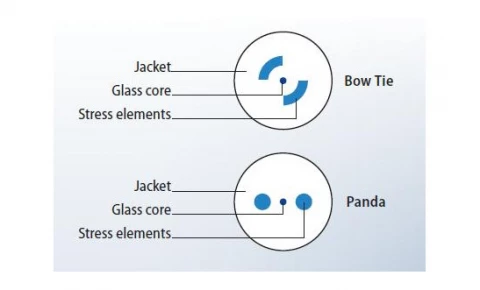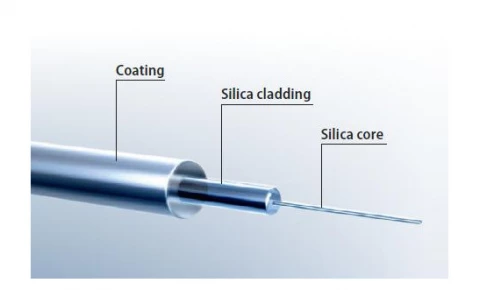Description
Polarization-maintaining fibers are an essential component in advanced optical systems, designed to maintain the polarization of light as it travels through the fiber. These specialized single-mode fibers are engineered with stress elements embedded in the cladding, exerting mechanical stresses on the fiber core. This unique construction induces birefringence in the fiber core, ensuring that the polarization of light remains consistent, even over long distances. The meticulous design of these fibers makes them indispensable in applications requiring high precision and reliability. I
The stress elements within polarization-maintaining fibers can be configured in various designs, such as Panda and Bow Tie, each tailored to specific performance requirements. The fibers feature a robust glass core surrounded by a protective jacket, ensuring durability and longevity. The choice of design affects the fiber's transmission properties, allowing for customization based on the desired wavelength range and attenuation. These fibers are particularly valuable in networks with optical fibers, pump lasers, and microscopic applications, where maintaining the integrity of the light's polarization is crucial.
Polarization-maintaining fibers are available in various specifications to cater to a wide range of applications, from visible to infrared wavelengths. With mode field diameters and numerical apertures carefully selected for optimal performance, these fibers offer exceptional transmission properties across different wavelength ranges. The fibers are coated with acrylate for additional protection, and custom jacketings and assemblies are available upon request to meet specific project needs. This versatility ensures that polarization-maintaining fibers can be seamlessly integrated into diverse optical systems, providing the precision and reliability that advanced applications demand.
FiberTech Polarization-Maintaining Fiber - 84821016H
Specifications
| Mode Field Diameter: | 6.6 um |
|---|---|
| Wavelength Range: | 950 – 1080 nm |
| Numerical Aperture: | 0.12 |
| Fiber Type: | Panda |
Features
- Polarization-Maintaining Design: Special single-mode fibers designed to maintain the polarization of light, ideal for networks with optical fibers, pump lasers, and microscopic applications.
- Stress Elements: Embedded stress elements in the cladding create mechanical stresses leading to birefringence in the fiber core.
- Fiber Types: Available in both Panda and Bow Tie designs to suit different application needs.
- Mode Field Diameter: Ranges from 3.2 µm to 6.6 µm, depending on the wavelength and fiber type.
- Jacket Diameter: Uniform jacket diameter of 125 µm across various models ensures compatibility with standard equipment.
- Transmission Properties: Wavelength ranges from 400 nm to 1390 nm, with specific cut-off wavelengths and attenuation rates tailored to application requirements.
- Numerical Aperture: Varies from 0.10 to 0.16, providing flexibility in light acceptance and guiding.
- Acrylate Coating: Durable acrylate coating with diameters ranging from 165 µm to 400 µm for added protection and performance stability.
- Order Customization: Jacketings and assemblies available upon request to meet specific project requirements.
Applications
- Network Applications: Polarization-maintaining fibers are crucial in optical fiber networks to ensure signal integrity by maintaining the polarization state of light.
- Pump Lasers: These fibers are used in pump lasers to enhance performance by managing the polarization of the laser light.
- Microscopic Applications: The fibers are employed in microscopic applications where precise control of light polarization is necessary for accurate imaging and analysis.
- Optical Communication Systems: Polarization-maintaining fibers are essential in optical communication systems to reduce signal degradation and improve data transmission quality.
- Fiber Optic Sensors: These fibers are used in sensors to detect changes in physical parameters by analyzing the polarization state of light.
- Quantum Computing and Cryptography: The fibers are used in quantum computing and cryptography applications where maintaining polarization is critical for secure and accurate data processing.
- Scientific Research: Researchers utilize these fibers in various scientific experiments where controlled light polarization is required.
- Medical Imaging: Polarization-maintaining fibers are used in medical imaging devices to enhance image clarity and detail.
Frequently Asked Questions
What is the attenuation of the FiberTech Polarization-Maintaining Fiber?
How do stress elements affect polarization-maintaining fibers?
What is the numerical aperture of the FiberTech Polarization-Maintaining Fiber?
What are polarization-maintaining fibers?
What are polarization-maintaining fibers used for?
Similar Products
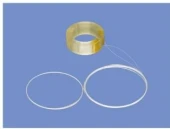
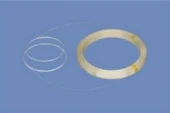


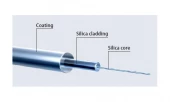
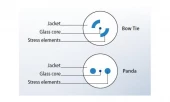
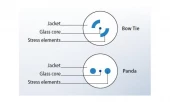
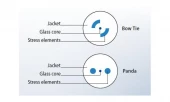
Your inquiry has been received.
Create an account by adding a password
Why create an account?
- Auto-complete inquiry forms
- View and manage all your past messages
- Save products to your favorites
- Close your account anytime — no hassle
